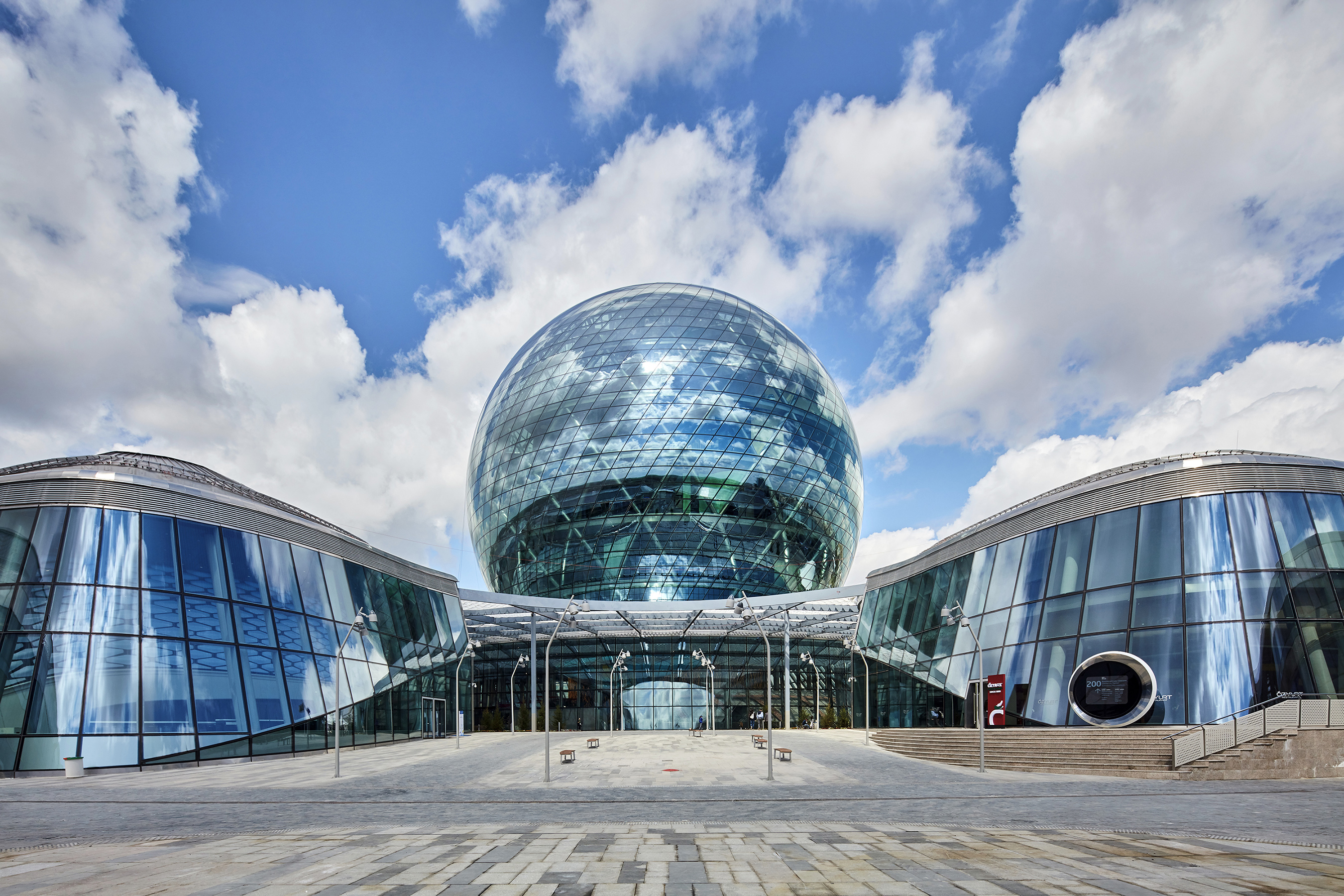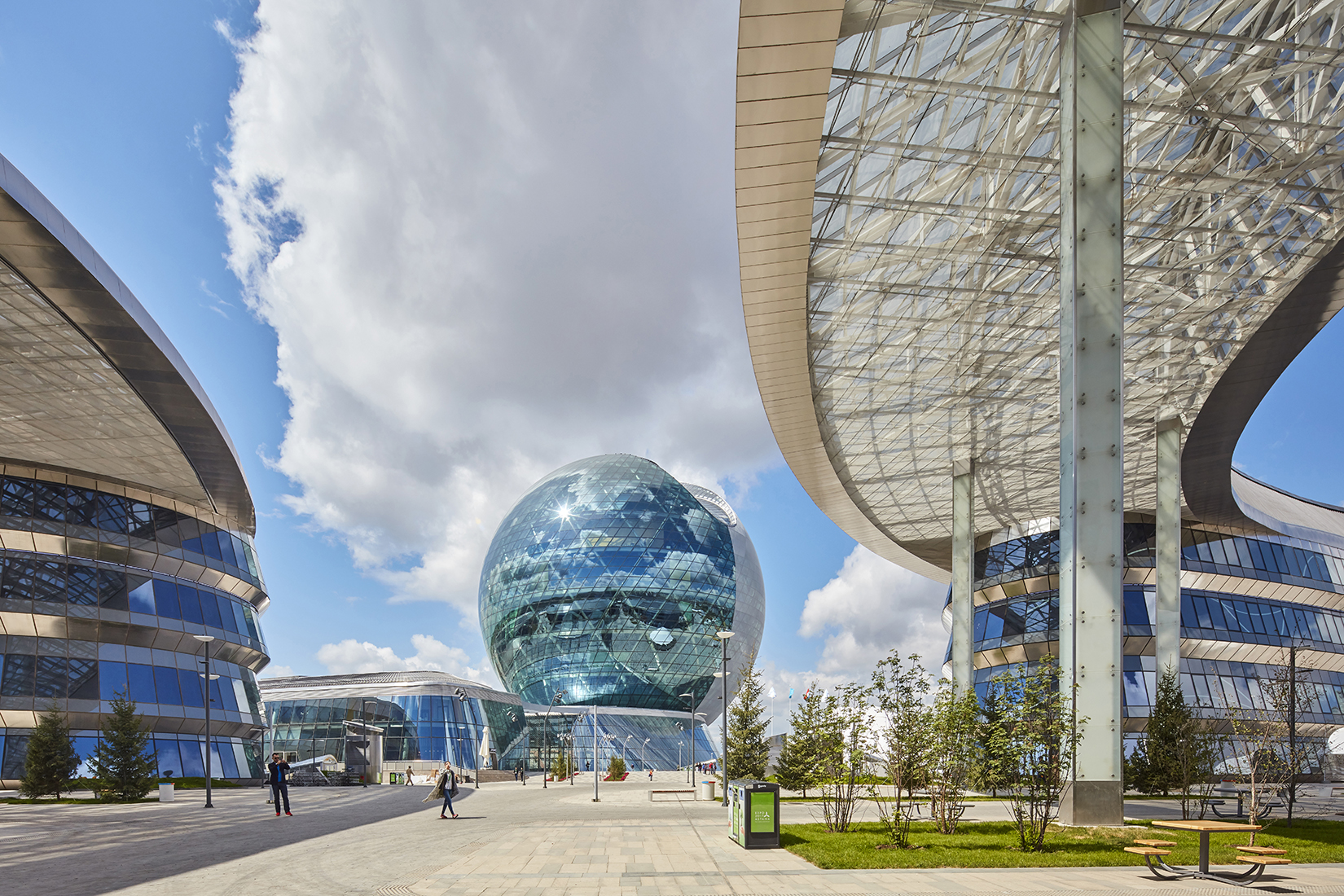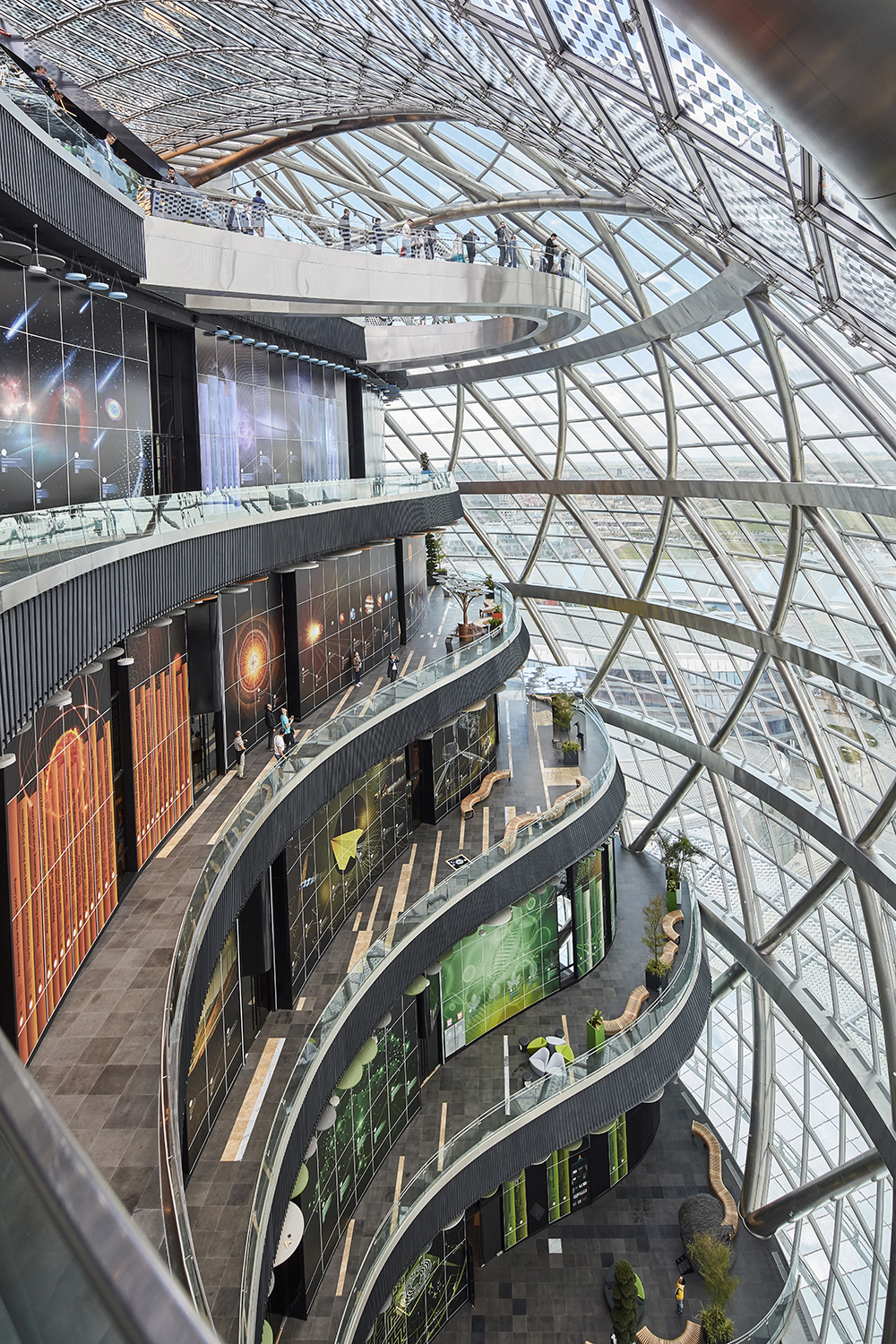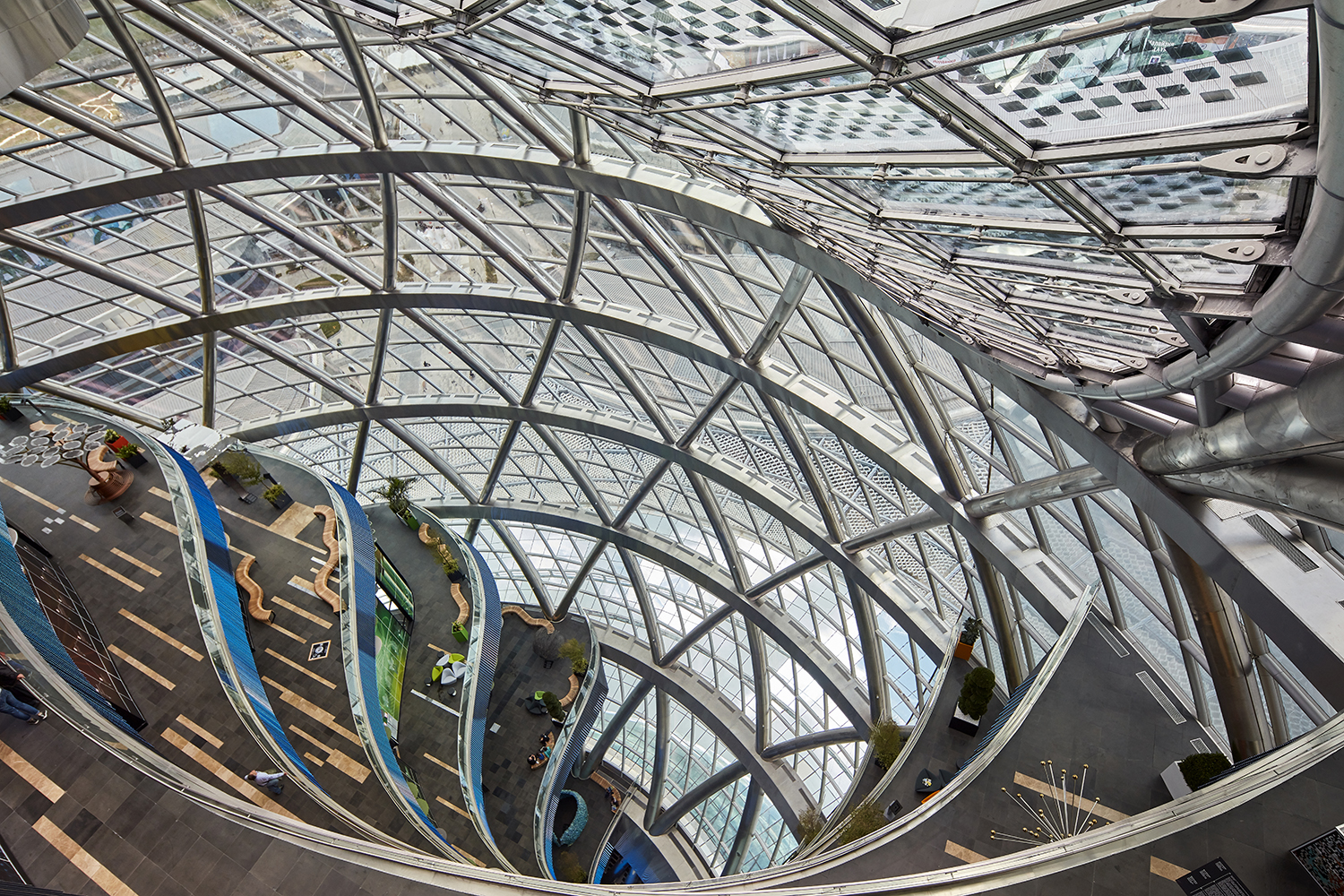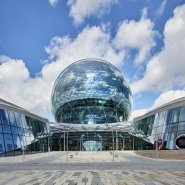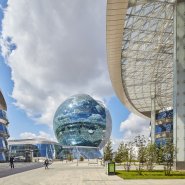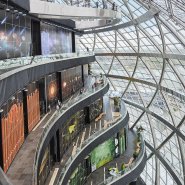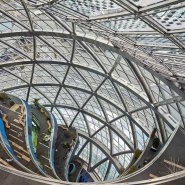The Kazakhstan Pavilion, locally known as Nur Alem: Museum of the Future was designed as the iconic, high-performing centerpiece of EXPO-2017, which was held in Astana from June10-September 10, 2017. The building accomplishes the client’s goals of a spherical-shaped building, while also meet the designer’s programmatic and sustainability goals. Since the exposition’s completion, the building has transitioned into a family friendly museum of science and technology that focuses on future energy solutions.
A pure-glass sphere—smooth, not faceted like a typical geosphere structure—was envisioned. The innovative, double-curved-glass façade gently curves in three dimensions. To achieve these results, the glass fabricator heated the glass in special ovens until the material was soft enough to take the form of a mold and then slowly cooled. The 80-meter-diameter, 100-meter high structure is slightly modified from a perfect sphere. The form was tested and modeled to determine how to minimize energy use, maximize daylighting, control glare, and take advantage of renewable sources with integrated photovoltaics and wind turbines.
The design team used Building Information Modeling (BIM) to explore multiple iterations of the design in a virtual space early in the design process. Each version was analyzed for design expression, energy impact, and structural integrity. The sphere’s complex design required close collaboration with the structural consultant for all opportunities for energy generation to be investigated, and several were incorporated into the building’s design. The sphere is supported by a central double core that is used to organize stairways and support functions such as service elevators and restrooms. A central atrium is surrounded by eight passenger elevators where visitors can experience the building and exhibitions as they travel on glass elevators from the ground level plaza to the top observation and event space. At the base, a covered access plaza organizes the entry sequence to the museum floors and provides additional exhibition space. Visitors can walk under the sphere and see into the interior spaces for alternative vantage points. Levels 2-7 are designated exhibition floors and level 8, the highest floor, is an event space with a viewing platform to observe optimum views of Astana.
After the initial form was chosen, more detailed analysis was conducted using Rhino/Grasshopper to further refine the form and to maximize sun exposure for the solar panels. Many investigations were completed and tested to integrate the BIPV panels while balancing the requirements of other critical building components such as MEP surface area requirements, collision with other architectural elements, maximizing wind swept area for the turbines, and the rationalization the double-curved minimal surface geometry. Ultimately Building Integrated Photo Voltaic cells (BIPV) were installed at the top of the sphere to generate renewable energy for the building. During the testing phase, the energy model predicted 81,056 kWh/yr of electricity or 2.21% of total energy demand.
To further improve energy generation, a scoop was carved out of the building’s top on for wind turbines. Countless designs were modeled and tested to find an appropriate form that responded to the programmatic requirements but that also optimized the amount of energy generation that could occur. For the design of the sphere these iterations focused on the wind energy that could be harvested from the surface of the sphere. The design team worked closely with wind engineers to design and test multiple overall building forms and eventually the various shape of an inlet on the surface of the building. Predominant southwest winds activate the turbines that were designed specifically for the harsh winter conditions of Astana. The turbines are predicted to produce a total of 52,700 kWh/yr of electricity or the equivalent of 1.6% of the buildings total electricity demand or 0.9% of total energy demand.
Other sustainable strategies that reduce energy costs include:
- High-performance glazing maximizes solar heat gain in winter while providing shading in the summer. All glazing is ultra-clear low-iron glass with low-E coating and ceramic frit in a varied pattern.
- The horizontal mullions support a perforated enclosure with a radiant heating tube system.
- Efficient LED lighting is integrated into the exterior curtain wall mullion system.
- A Building Management System (BMS) controlled shading system is integrated into the exterior wall mullion system.
